Planting White Clover needs minimal care and love. Learn How to Grow White Clover easily from our ultimate guide.
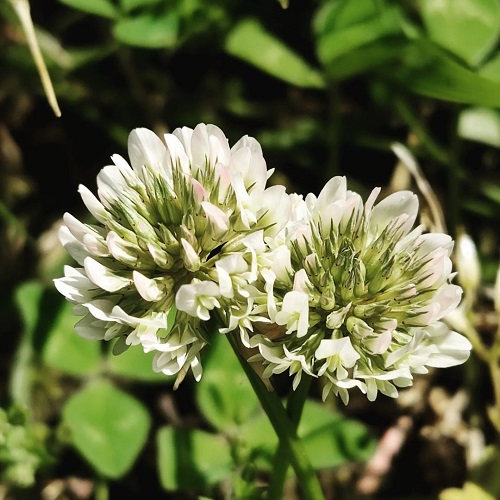
Symbol of luck, White Clover is no longer a ‘weed.’ Planting White Clover is beneficial as it is considered a useful plant and used as a cover crop, grass replacement, and green manure. It is also grown as a decorative ground cover and is attractive to honey bees, with edible and medicinal uses. Know all you need from this article about How to Grow White Clover.
Botanical Name: Trifolium repens
USDA Zones: 4-9
Common Names: Dutch clover and Ladino
Learn how to grow Red Clover here
White Clover Plant Information
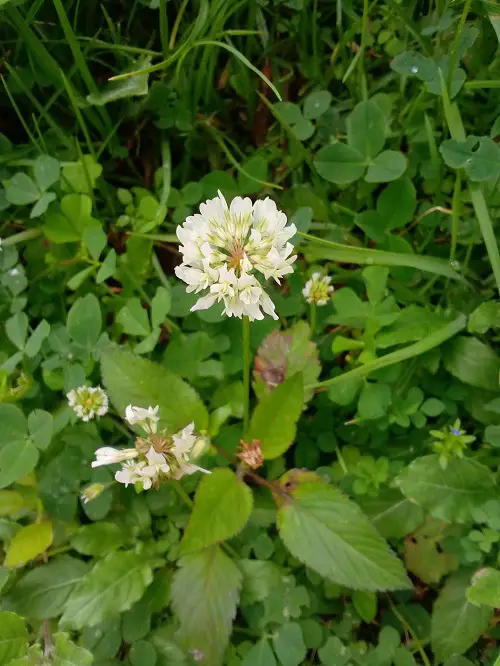
White Clover belongs to the family of peas and is also often thought of as an invasive plant in several parts of North America. The flowers are grouped in spherical flower heads, white in color, sometimes slightly pinkish-white, and attract bees and bumblebees. Flowering occurs from April-May to September.
Over time, it has naturalized across many parts of the continent, in gardens, along roadsides, and meadows.
Here are some great benefits of Lucky bamboo
Types of White Clover
There are some improved types of White Clover besides the wild version. Here are some of them:
1. Atropurpureum

It features leaves in a chocolate-brown shade with distinct green margins.
2. Micro Clover

This variety sports smaller leaves and is one of the shorter types, making them ideal for containers.
3. Dragon’s Blood
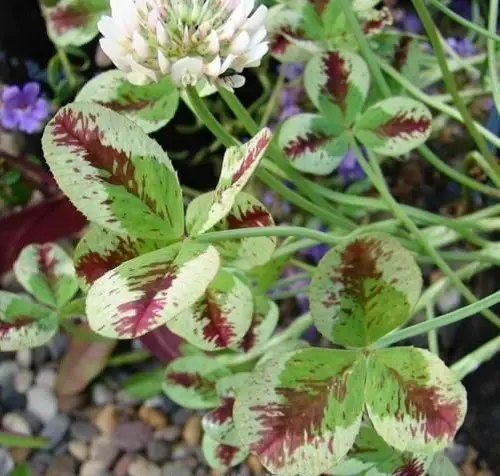
It is one of the most attractive cultivars of White Clover. It produces tricolored leaves with red, green, and white colors.
Have a look at the best good luck plants here
Planting White Clover

White Clovers can spread out by spreading offshoots to form another plant. Follow these instructions:
- Find a mature, healthy plant with an offshoot branching for Planting White Clover.
- Cut off the offshoot carefully using scissors or pruning shears to separate it from the guardian plant.
- Plant it directly into the garden or in a pot filled with a well-draining potting mix.
- Water well and ensure it gets plenty of light.
Check out our article on growing pothos indoors here
Planting White Clover From Seeds
Planting White Clover from seeds is easy, and the ideal time to sow seeds is in the summer or spring when it is warm.
- Scatter the seeds in the soil, cover them with a thin layer of growing medium, and water gently. Expose it to dappled light.
- The seeds will sprout in 2-3 weeks.
Requirements for Growing White Clover
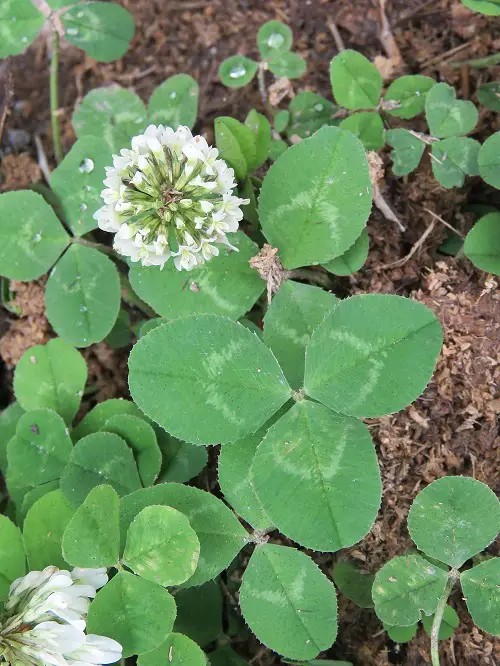
Sunlight
The plant grows best in plenty of light, so ensure it gets a minimum of 5-6 hours of intense sun daily. Growing it in the shade will result in leggy growth with fewer or no flowers.
Soil
White Clover is a hardy plant that grows in various soil types. It prefers well draining growing medium with a neutral to slightly acidic pH of 5 to 6.5. Amend the soil with plenty of organic matter to boost growth.
Watering
White clover prefers slightly moist soil. However, it can tolerate a short drought period, but it is not drought tolerant. The best rule to follow is to water the plant only when the topsoil goes a little dry to the touch.
Temperature and Humidity
Planting White Clover is best in warm weather. This plant needs no extra humidity and can thrive well in an average humidity level of 10-30 percent. The ideal range for their growth is 50-63℉ or 10-17℃.
Check out how to grow Orchids indoors here
White Clover Care
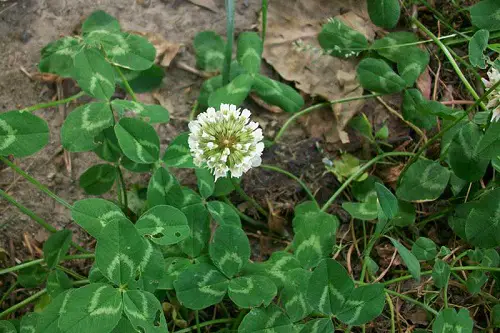
Fertilizer
White Clover is instrumental as a ground cover because it fixes nitrogen in the soil. Therefore, it needs no feeding and can save effort, time, and money.
Pests and Diseases
White clover is resistant to diseases and pests. However, the risk of slug attack is possible at the beginning of its growth.
Here’s everything you need to know about growing basil indoors
Interesting Facts about White Clover
- Its ability to fix nitrogen makes it a quality green manure. It is resistant to trampling and can accompany the grass or even replace it.
- Flower nectar is a delight for butterflies, bees, and bumble bees. Clover flower tea is an excellent drink; the leaves are eaten in salads or cooked. Clover tea is recommended during a cough and cold.
- Planting white clover attracts pollinators and beneficial insects. Plant it near a vegetable garden or orchard to attract pollinators.
- White clover is a tough plant, it enriches the soil with nitrogen, but it isn’t easy to destroy.



I love this it work just how i wanted thank you
Will the seeds take if they are broadcast over the top of existing grass/weeds?
That’s how I planted and it took off great
Could you tell us exactly how to harvest the white clover? Show a picture of how the flower looks when it’s ready for harvest. Thank you
Kahna Emery, did you ever get an answer on how to harvest the seeds?
We decided about 3 years ago to patch our lawn with clover to do our part to help the endangered honey be. However, we haven’t seen on bloom from the white dutch clover we’ve planted. Did we do something wrong and how can we correct the problem?
Thank you.
Am getting ready to switch my large fescue yard to clover. Am sick of watering and feeding and cutting and even still having it dry up in the summer heat!
Just read your comment. Did you manage to change your fescue lawn to a clover one? My lawn got decimated by Chaffer Grubs (June Bugs) last summer and I was thinking now its spring of planting a clover lawn instead. Despite going through the winter there are still grubs in the soil, so I think if I just reseed it then the grubs will eat the grass again. They didn’t seem to eat clover. (I’m in central UK) Would be great to hear how you have got on.